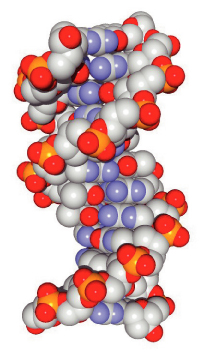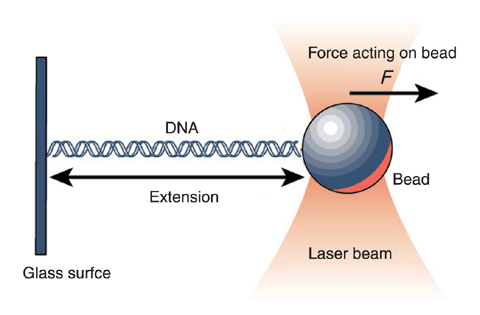
Fig. 10-6 Three dimensional structure of DNA

Fig.10-7 Single DNA manipulation experiment using optical tweezers
DNA is a string-like material with diameter of about 2 nm and carries genetic information for almost all organisms on earth. DNA is the longest material in a cell. For example, if all DNA molecules in a cell were connected to make a single string, the string would be 2m in length (see legend to Fig.10-6). It is quite surprising that such a long DNA is folded and stored in a nucleus with diameter of 10 µm.
People tend to focus on the genetic information which DNA carries. When it comes to the DNA folding problem, however, it is important to study the spatial structure of DNA and its bending properties. The structural property of DNA is important for biological reasons as well. For various biological activities, the genetic information on DNA needs to be read. In such occasions, physical force, which causes bending and twisting of DNA, is often applied on DNA. The reaction of DNA against such a force has been revealed to be involved in the control of the reading of the genetic information.
The bending and twisting moduli of DNA are the most fundamental structural properties of DNA. Many researchers have measured these mechanical constants with various experimental techniques. However, there still is controversy about them.
Recently, single molecule manipulation technique using optical tweezers is often applied to biomolecules (Fig.10-7). In this technique, a bead is attached to a molecule of interest, and a laser beam is applied on the bead, thereby generating a force on the bead. Researchers can apply forces on the molecule by moving the bead, and/or ascertain the position of the molecule by observing the position of the bead. The experiment is performed under optical microscopy.
A single molecule manipulation experiment involving DNA was expected to yield accurate mechanical constants of DNA, and indeed, the bending moduli derived from the experiments were consistent with those derived from other experimental techniques. The twisting moduli, however, were appreciably larger than the previous values.
We tried to find the reason for the inconsistency of the twisting moduli of DNA by computer simulation. We simulated a DNA in the single molecule manipulation experiment by applying a force on both ends of the DNA. We also simulated a DNA without any force applied. We found that the twisting modulus becomes larger when the force is applied on both ends than when no force is applied, and that the local conformational couplings of DNA, which has been discovered recently, induce the increase of the twisting moduli.